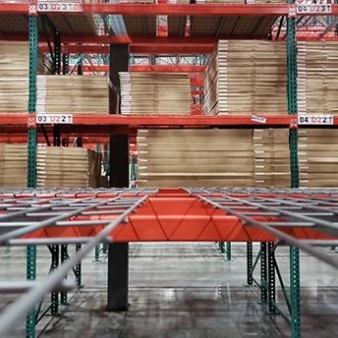Adjusting and expanding storage shelves can be a useful way to optimize your storage space, but it also comes with potential challenges and considerations. Here are some problems you should pay attention to when adjusting or expanding storage shelves:
Weight Distribution: When adding or adjusting shelves, it's crucial to maintain proper weight distribution. Ensure that heavy items are placed on sturdy lower shelves to prevent instability and the risk of tipping over.
Overloading: Adding more shelves might tempt you to store more items, but it's essential to stay within the weight capacity of the shelving units. Overloading shelves can lead to structural damage and safety hazards.
Stability: When expanding shelving units, make sure they remain stable and level. Follow the manufacturer's guidelines for adding extra shelves, and consider reinforcing the unit if necessary to maintain stability.
Spacing: Pay attention to the vertical spacing between shelves. Ensure that there is adequate space between shelves to accommodate the items you plan to store. Overcrowding or underutilizing the space can lead to inefficiency.

Safety Brackets: If you're expanding wall-mounted shelves, be sure to install additional support brackets or anchors to accommodate the added weight and prevent the shelves from pulling away from the wall.
Clearance: Allow for adequate clearance between shelves and the ceiling to make it easier to access and retrieve items. This clearance should also consider the size of the items you plan to store.
Accessibility: Consider the ergonomics of shelf placement. Frequently accessed items should be at a comfortable height to avoid straining when reaching for them. Use step stools or ladders for items on higher shelves.
Organizational Plan: Before making adjustments or expansions, have a clear organizational plan. Group similar items together, label shelves, and consider how often you'll need to access certain items.
Space Efficiency: Ensure that the new shelving configuration maximizes the use of available space. Overly large gaps or unused corners can lead to inefficient use of storage space.
Safety Hazards: Be mindful of safety hazards such as sharp corners or exposed fasteners when making adjustments or expansions. Ensure that no potential hazards are created in the process.
Aesthetics: Consider the visual impact of the shelving adjustments or expansions. Ensure that the new shelves fit well with the existing decor and do not obstruct pathways or create a cluttered appearance.
Permits and Regulations: In some cases, particularly for commercial or industrial shelving systems, you may need to comply with local building codes or regulations. Ensure that your adjustments or expansions meet any necessary requirements.
Maintenance: Regularly inspect and maintain your shelving units to ensure they remain in good condition. Tighten screws and bolts, replace damaged parts, and keep the shelving clean.
Budget: Expanding or adjusting shelving systems may require additional costs, such as purchasing new shelves, brackets, or tools. Be mindful of your budget and plan accordingly.
Consultation: If you have concerns or questions about the adjustments or expansions, consider consulting with a professional or expert in shelving and storage solutions to ensure safety and efficiency.
By paying attention to these problems and considerations, you can make informed decisions when adjusting and expanding storage shelves while ensuring safety, organization, and efficiency in your storage space. The above is the analysis of storage shelf manufacturers, if you have any questions and needs, you can contact us! We will provide you with satisfactory warehouse and storage solutions.